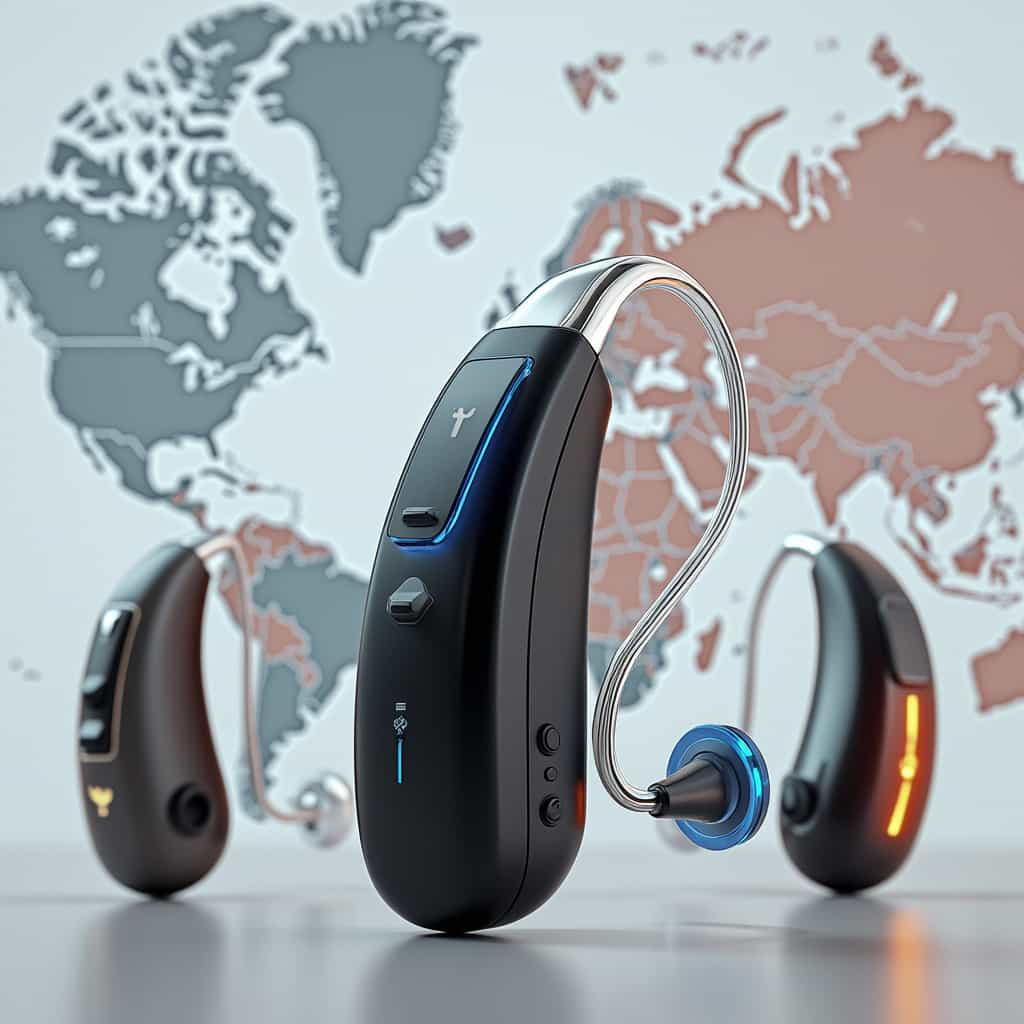Hearing loss is a challenge affecting millions globally, with external hearing aids being a critical solution for many. These devices have evolved significantly, promising improved sound clarity, reduced background noise, and enhanced comfort. Innovations in this field never cease, bringing ever more advanced options to consumers.
Early hearing aids date back centuries, resembling large, unwieldy devices that were often uncomfortable and conspicuous. Their evolution accelerated in the 20th century with the advent of electronic devices. It’s fascinating to consider how far they’ve come, now leveraging digital technology to offer tailored sound experiences.
Today, the latest digital hearing aids come equipped with Bluetooth connectivity, enabling seamless pairing with smartphones and other devices. This feature allows users to effortlessly stream phone calls, audiobooks, or music directly to their hearing aids. Additionally, sophisticated algorithms filter out unwanted noise, making conversations in noisy environments clearer.
Geographically, the adoption of hearing aids varies widely. In North America and Europe, there is a relatively high acceptance and utilization of these devices, attributed to higher access to healthcare services and greater public awareness. Conversely, in developing regions of Asia and Africa, utilization rates are lower due to economic barriers and limited healthcare infrastructure.
Interestingly, Japan has one of the highest rates of hearing aid utilization, a factor influenced by the country’s aging population and cultural stigmas being progressively dismantled. According to the World Health Organization, while approximately 466 million people globally suffer from disabling hearing loss, only a small fraction utilize hearing aids.
The stigma surrounding hearing aids, much like wearing glasses, has often hindered their adoption. However, perceptions are changing. Increasingly, hearing aids are designed with aesthetics in mind, closely resembling wireless earphones rather than traditional devices, which boosts societal acceptance.
Historically, famous figures like Thomas Edison, who suffered from hearing loss, did not have access to the technology available today. Edison’s innovative spirit drove him to develop his own methods of communication, a testament to how necessity often drives innovation.
Looking to the future, several groundbreaking hearing aid technologies are currently under development. One exciting avenue is the integration of artificial intelligence, which can offer real-time sound adjustments tailored to the user’s environment, improving the overall listening experience.
Researchers in Europe and the United States are pioneering the use of economic and lightweight materials that promise greater durability and affordability for hearing aids. Additionally, studies have shown promising results for hearing aids capable of translating foreign languages in real-time, a potential boon for frequent travelers.
Environmental sustainability is also becoming a focus in hearing aid production, with companies exploring biodegradable materials and solar-powered devices. Experts in audiology emphasize the importance of balancing technological advances with environmental responsibility, ensuring that future generations also benefit from these innovations.
Healthcare policies play a crucial role in accessibility. In countries like Denmark and the Netherlands, hearing aids are considered essential healthcare, largely covered by national health services. This support contrasts with the United States, where high costs often require significant out-of-pocket expenditure, though recent policy shifts aim to alleviate this burden.
In an era of rapid technological change, external hearing aids are no exception, constantly evolving to meet the needs of users worldwide. Whether through improved connectivity, innovative designs, or enhanced functionalities, these devices are poised to significantly improve quality of life for those with hearing impairments.
To understand the nuances of hearing aid technology, it’s vital to seek insights from audiologists and technologists who are at the forefront of this evolution. According to Dr. Margaret Lang, a leading audiologist, ‘the future of hearing aids lies in their ability to seamlessly integrate into our digital ecosystems without compromising on the simplicity and functionality users require.’
In conclusion, while external hearing aids continue to advance, challenges remain in ensuring widespread accessibility and acceptance across diverse socio-economic landscapes. Continued research and development, alongside policy reforms, are essential to overcoming these hurdles and leveraging technology to enhance human connectivity. The journey of hearing aids from rudimentary devices to sophisticated digital tools is a testament to human ingenuity in tackling physiological limitations.
You may also like
Hair Loss Treatments and Skin Diseases
Hair loss is a global issue affecting millions of men and women worldwide, with distinct patterns and causes between genders. This article delves into current treatments and explores emerging technologies and research in combating hair loss. Additionally, it examines associated skin conditions, including acne, atopic dermatitis, psoriasis, and dental care, outlining the latest in treatment advancements.
Acne: Symptoms, Treatments and Advances in Research
Acne is a common skin condition that affects teenagers and adults worldwide, presenting unique challenges for each group. This article delves into the symptoms and available treatments for acne, alongside exploring emerging studies and innovative approaches in combating this condition. Additionally, it provides insight into related dermatological issues such as hair loss, atopic dermatitis, psoriasis, and advancements in dental care.
Atopic Dermatitis: Symptoms, Treatments and Promising New Research
Atopic dermatitis is a chronic skin condition characterized by inflammation and itchiness. This article explores the symptoms and treatments for atopic dermatitis and psoriasis, offering insights into innovative treatments and ongoing research for these skin conditions.
Dental Implants and Oral Hygiene: Revolutionary Treatments
This comprehensive article delves into the domain of dental implants and oral hygiene, providing insights into various treatment methods, geographical incidence, and groundbreaking studies on the horizon. Additionally, it explores related health issues such as hair loss, atopic dermatitis, psoriasis, and acne, offering a glimpse into innovative treatments that promise to transform care standards.
